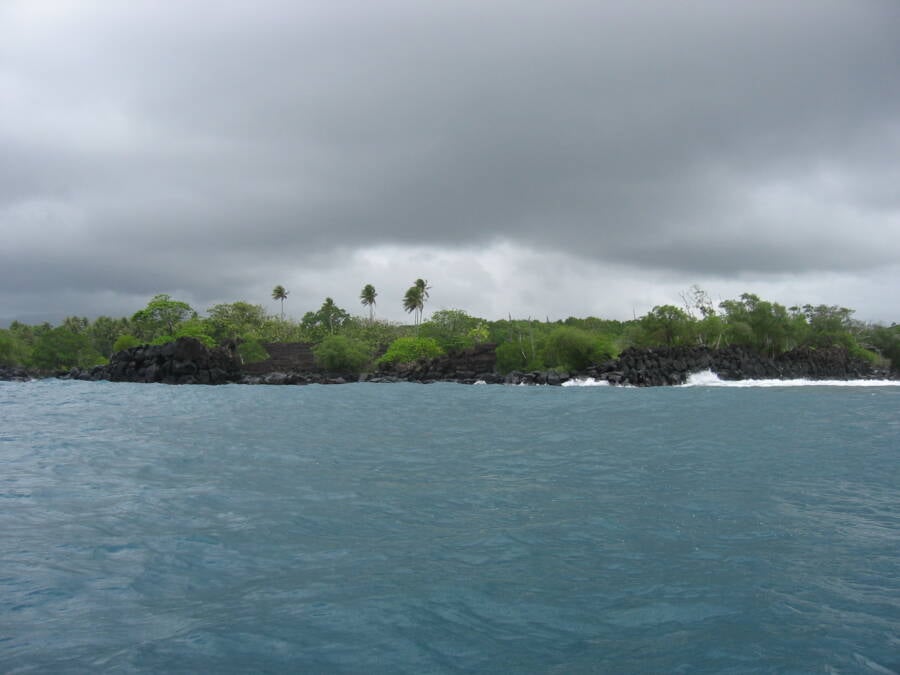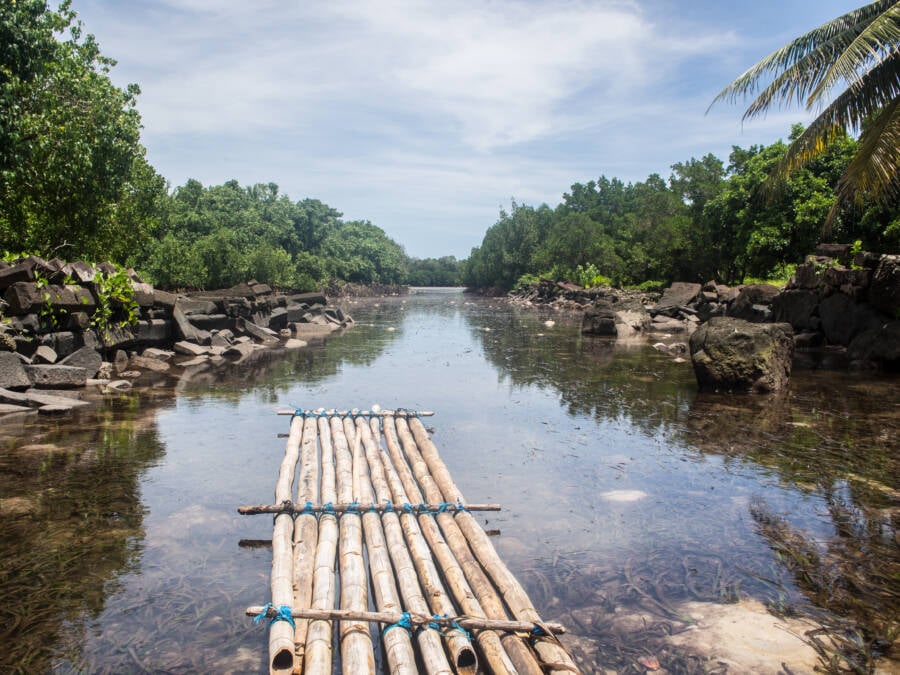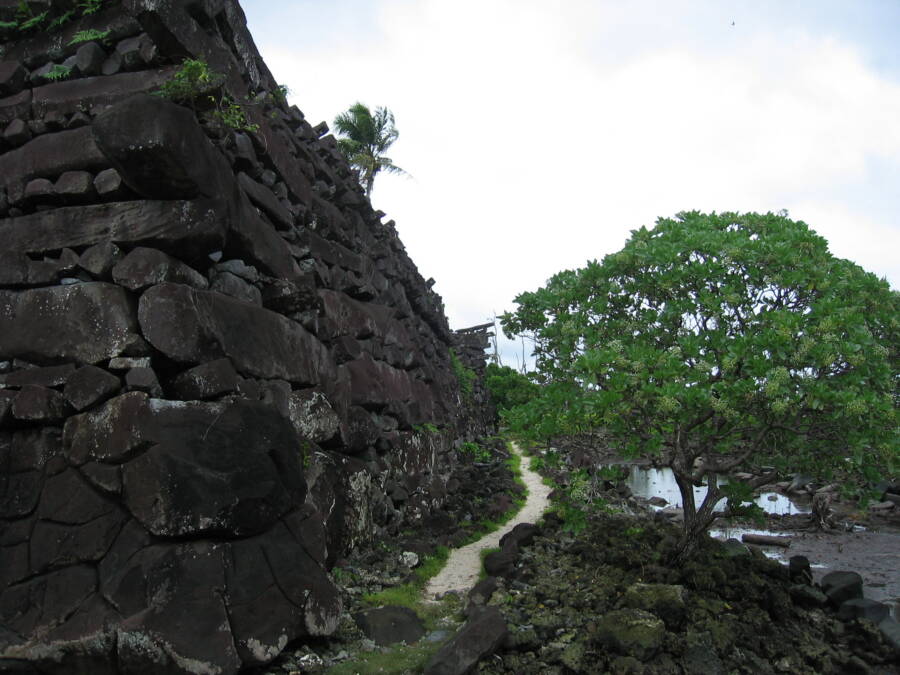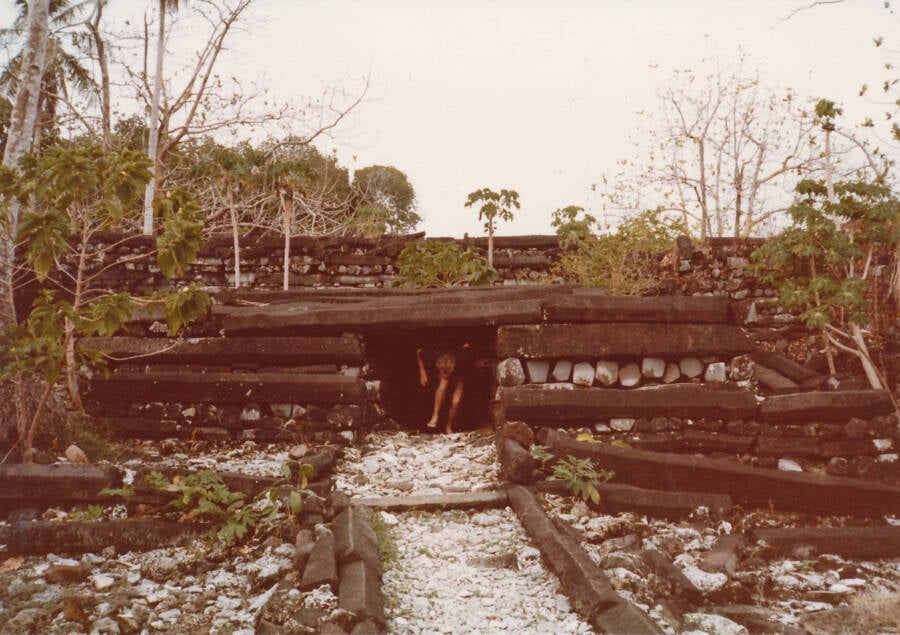Often referred to as the "Venice of the Pacific," Nan Madol was history's only city ever built on a coral reef, and it served as a royal capital for the Saudeleur dynasty of Micronesia from around 1200 until the 17th century.
Nan Madol is one of the most unique and fascinating ruins in the Pacific. Located in the crystal-clear waters off the eastern coast of Pohnpei, one of the Federated States of Micronesia, the massive complex consists of around 100 artificial islands spanning roughly 200 acres — and it is the only city built atop a coral reef.
In the local Pohnpeian language, the name Nan Madol loosely translates to "spaces between," referring to the network of canals that served as waterways for the stone city. It was once the ceremonial and political center of the Saudeleur dynasty, which ruled from 1100 to 1628 C.E., and it stands today as a testament to their remarkable engineering skills.
Nan Madol was constructed out of approximately 750,000 tons of black basalt rock. Some of these stones weighed 50 tons apiece — and the people of Micronesia managed to not only gather and transport them but also to precisely fit them together without mortar to create walls that still stand today.
To understand just how impressive a feat the city was, check out our gallery above and see the remains of this historic site.
How Nan Madol Became The Heart Of The Saudeleur Dynasty
Although not much remains of the Saudeleur dynasty today, the culture once played a vital role in unifying Pohnpei and the surrounding regions.
The Saudeleurs first emerged sometime around 1100 C.E., and construction of Nan Madol began roughly 100 years later. The civilization's origins, however, are clouded with legend and blur the line between fact and fiction.
The most commonly cited builders of Nan Madol were twins known as Olisihpa and Olosohpa, but as author Glenn Petersen detailed in Lost in the Weeds: Theme and Variation in Pohnpei Political Mythology, who these twins were is the subject of some debate.
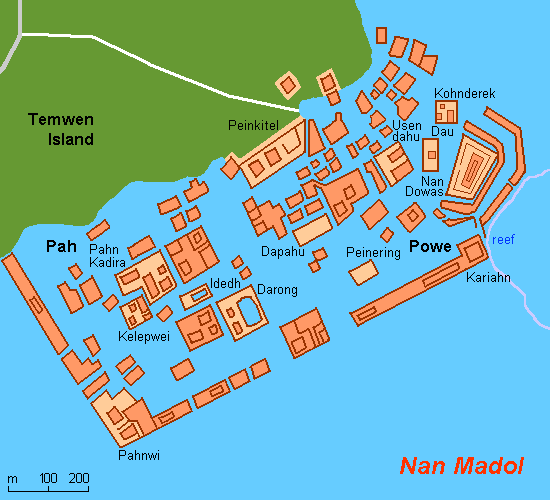
Public DomainA map of Nan Madol showing the various islets.
In legend, they are often hailed as sorcerer-kings from a mythical land, but there's no evidence that the men had mystical powers. Most accounts collected by Petersen agree that the brothers were seasoned travelers seeking a "suitable site in which to worship or practice certain rituals," and they found themselves at Nan Madol.
But even in the modern era, the legendary explanation for how the city's massive stones were transported and constructed persists. Petersen writes:
"I have heard many people of modern Pohnpei speak about the task of building Nan Madol. They can understand how their ancestors might have used rafts and inclined planes to move the stones into place, but by and large, they say, there was much greater mana in those days, and stronger magic. Their ancestors used the magic to do the heavy work, they assure me, not mechanical devices."
Magic or not, the city's construction was certainly an impressive feat of ancient engineering. The builders created their artificial islands by constructing massive stone foundations directly on the coral reef and then building upward using a technique similar to erecting a log cabin. The precision of the stonework itself is remarkable, with many joints so meticulously fitted together that they remain tight after nearly a millennium.
Indeed, the Saudeleur dynasty fell long before the buildings they created.
The Downfall Of The Saudeleurs And The Abandonment Of Nan Madol
The people who built Nan Madol created distinct districts within the complex for different purposes, such as an administrative section and a mortuary complex. This lasted for more than 500 years as the Saudeleurs exacted tribute from communities across Pohnpei and established trade networks throughout Micronesia.
The reign of the Saudeleurs was not perfect, though. Over time, the Saudeleur rulers grew more and more tyrannical, imposing harsh restrictions on their subjects and demanding excessive tribute. According to legend, their rule was eventually ended by an invading warrior known as Isokelekel.
While dozens of variations of the events that transpired exist, there are some commonalities between them. For one reason or another, a war broke out — either due to a smaller altercation blowing out of proportion or because Isokelekel staged an insurrection — and ended with Isokelekel's victory over the city's rulers sometime in the early 17th century.
Over the next several decades, Isokelekel's successors gradually abandoned the site, and it was reclaimed by nature. While local Pohnpeians maintained the oral traditions of its history, Nan Madol remained largely unknown to the outside world until the 19th century.
Archaeological Excavations And Conservation Efforts
Although it never became "lost," the presence of Nan Madol was largely unknown to the outside world until it was first described in detail in 1874 by Polish ethnographer and oceanographer John Stanislaw Kubary.
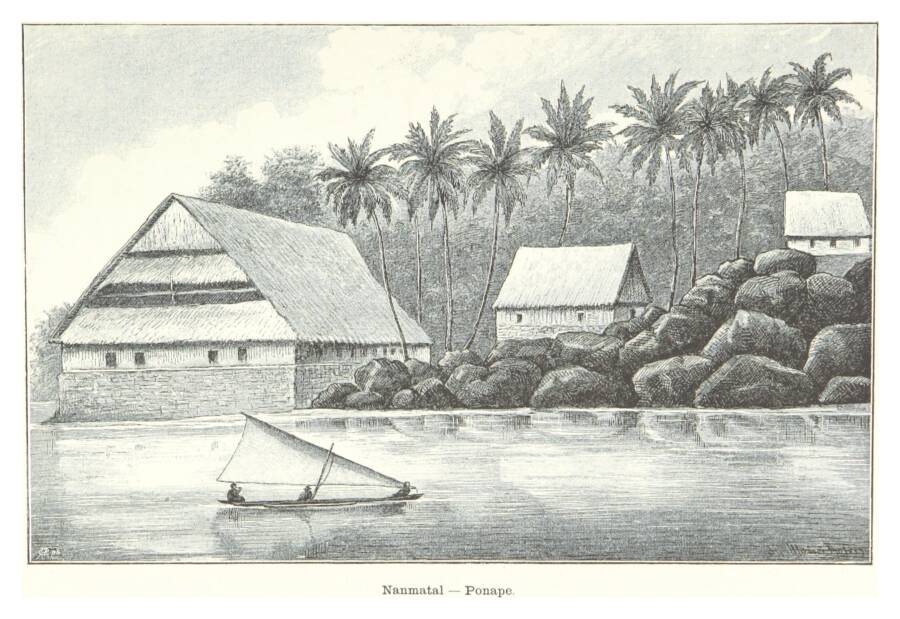
Public DomainA sketch of Nan Madol from Franz Hernsheim's Südsee-Erinnerungen.
Not long after, in the early 1900s, German archaeologist Paul Hambruch conducted the first systematic study of Nan Madol during the German colonial administration of the Caroline Islands. That said, it wouldn't be until the latter half of the 20th century that comprehensive archaeological investigations of the site commenced.
Then, in 2016, Nan Madol achieved international recognition when UNESCO designated it as a World Heritage Site, formally acknowledging its "outstanding universal value" to humanity. Notably, it was the first World Heritage Site in the Federated States of Micronesia. UNESCO also highlighted some of the challenges that could threaten Nan Madol's preservation.
Climate change and rising sea levels are perhaps the greatest long-term dangers to the ruins of the stone city. As ocean levels rise and storm patterns intensify, the delicate balance between the stone structures and the marine environment becomes increasingly precarious. This is only compounded by the overgrowth of vegetation that is weakening the stone structures.
Despite these challenges, Nan Madol draws in many visitors and researchers from around the world each year. The site is a reminder of the sophistication of Pacific civilizations that thrived before the arrival of "civilized" European settlers — and a testament to the advanced engineering of the Saudeleur dynasty.
After this look into Nan Madol, read about the history of Predjama Castle, the medieval fortress built into the mouth of a cave. Then, see 25 stunning photographs of Hegra, the ancient city that sat untouched for 2,000 years.
